Tandalachi Bhakri: The Rice Roti of the Kolis
By Ankita Jain
Mumbai’s epicurean delights reflect the city's cosmopolitan demography and its evolution as the financial capital of India, with a large working-class population employed in various jobs, services, and labour-intensive industries. Much of its street food has evolved to feed this working-class population, including iconic dishes like vada pav, pav bhaji, bhel puri, and sev puri. Fast-food restaurants, such as Iranian cafes and roadside eateries that make kebabs and rolls, are also popular in the city. The Koli community's culinary traditions, characterized by its use of fresh seafood, aromatic spices, and simple cooking techniques that highlight the natural flavours of the ingredients, have enriched Mumbai's gastronomic diversity.
For centuries, the Kolis have lived along Mumbai's coastal areas, predating the arrival of European powers in the region. Colourful Koliwadas dot Mumbai’s western and eastern coastlines. Given that fishing has been a traditional occupation among the Koli community, their cuisine is naturally rich in seafood, including dishes like bangda fry (mackerel fry), kombdi vade (chicken curry with rice flour bread), pomfret curry, sura kadi (shark curry), Bombay duck fry, and other spicy delicacies. They are served with either plain rice or tandalachi bhakri, the local version of roti or chapati. The trait that makes this roti unique is evident in its name. Tandula means rice in the local Marathi language, and therefore tandalachi bhakri roughly translates to roti made from rice.
The bhakri, a staple food among Kolis, is simple to make and requires no tools except a tava to cook on. Bhakris are lightweight and comfortable on the stomach, and they last several days, making them ideal for long-distance voyages. This was a requirement for the itinerant lifestyle of the Koli fishermen. When Koli fishermen went deep-sea fishing, their wives packed bhakris for them. Typically, fishing trawlers do not have enough room for a kitchen, and cooking at sea is sometimes difficult and hazardous. This makes bhakri a perfect, long-lasting food to carry at sea, where people eat it with various accompaniments like chutney, pickles, vegetable curry, or fish.
Rice flour serves as the base ingredient for bhakri. Boiling water is added to the flour, along with a pinch of salt for flavour. The resulting dough is thoroughly kneaded to develop the gluten in the rice flour, which gives the bhakri its texture. Kneading makes the dough supple and soft, which allows it to stretch. Small portions of the dough are taken and flattened into a round shape by hand-pressing it against a flat surface. Unlike rotis, the bhakri is entirely hand-pressed and does not use a rolling pin to flatten the dough uniformly. Hand-pressing the dough to make it uniform in size and thickness takes years of experience to master, a skill in which Koli women take great pride.
Next, they cook the flattened dough on a tava that receives heat from underneath. Koli women typically use a cast-iron tava. Koli women cook the bhakri on both sides until it turns golden brown, flipping it multiple times to ensure even cooking. Once fully cooked, remove the bhakri from the tava and serve hot. While the basic preparation method remains the same, there are variations of Bhakri made using different flours. These include jowar (sorghum), bajra (pearl millet), and nachni (finger millet), which are common in different regions of India.
Koli women have played a central role in developing Koli recipes, which are passed down through generations from mother to daughter and other female members of the family who usually do the household cooking. Teachers instill this skill from a young age and it persists throughout life, especially after marriage when the woman assumes responsibility for household management. Traditionally, potential Koli brides were required to showcase their proficiency in crafting the ideal bhakri, a skill they would have acquired through their involvement in the kitchen.
In addition to taking care of household affairs, Koli women run small businesses and roadside eateries. Either their immediate family members or cooperative groups of women manage these businesses. Mumbai's street food culture revolves around food that is quick to make and easy to carry away. Customers at these eateries serve bhakris hot off the tava, wrap them in newspapers, and take them away for lunch. The extra earnings from running small businesses and eateries add to the family's income, which empowers them economically and socially. The Koli women's economic endeavours are a testament to their tenacity and resolve to build stronger futures for their communities, families, and themselves.

The Arabian Sea to the west and Malad Creek to the east separate Madh Island from Versova, which is located along the western coastline of Mumbai's northern suburbs. Commuters traveling between Madh and Versova use ferry services that operate across Malad Creek. The first ferry starts at 5 am. Ferries run every 15 minutes, and the journey takes about five minutes. The ride fare is ₹3.00.

A wide range of commuters use the Versova-Madh ferry service, with some even riding two-wheelers stacked on the flat decks. Daily commuters include students going to school, daily wage labourers, working professionals, and fishermen with their daily catch headed for the markets.
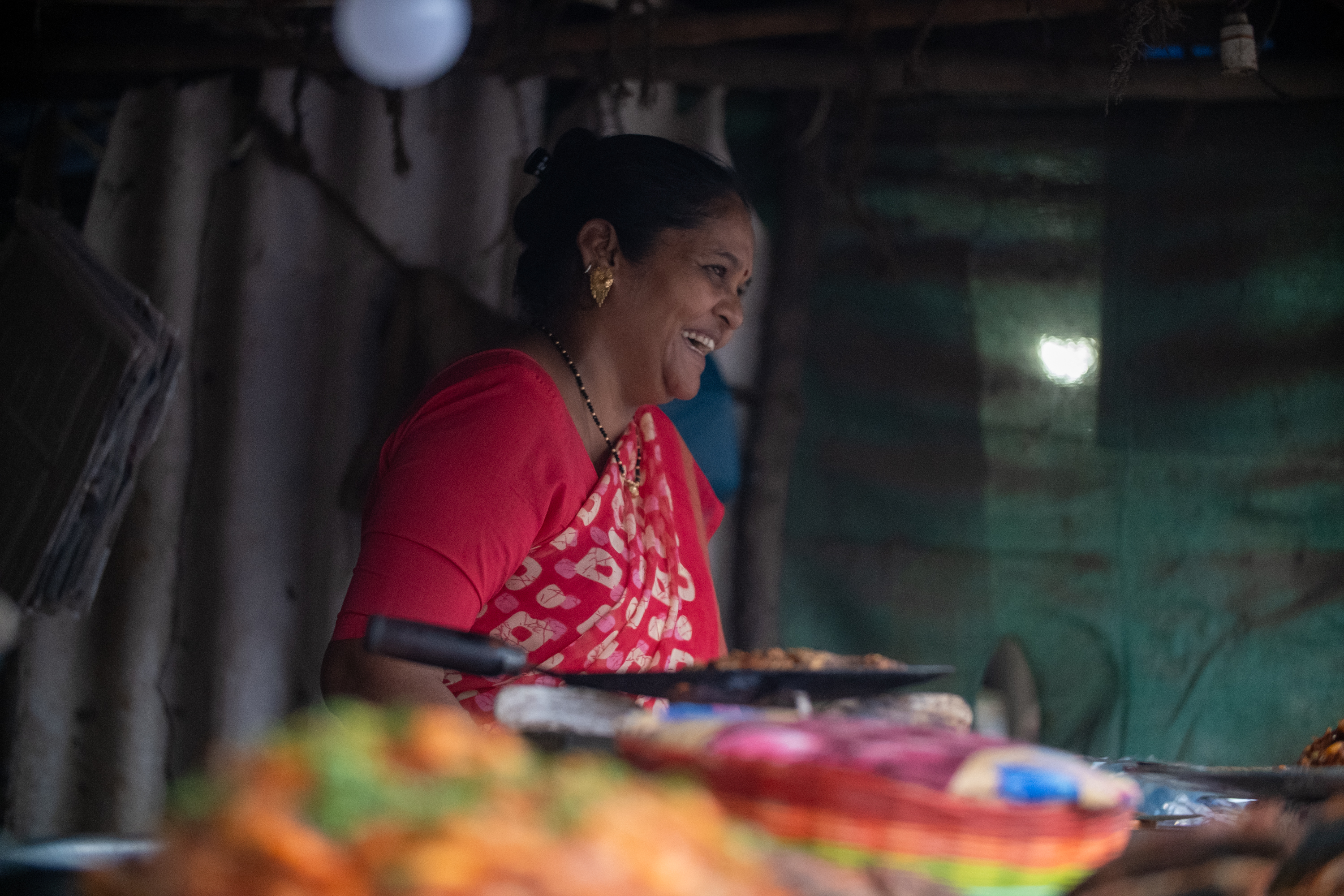
Koli women are actively involved in various economic activities related to fishing and maritime livelihoods, and they play a central role in maintaining the household in the absence of male family members who are away at sea. In addition to taking care of their household affairs, they run small businesses that add to the family income.
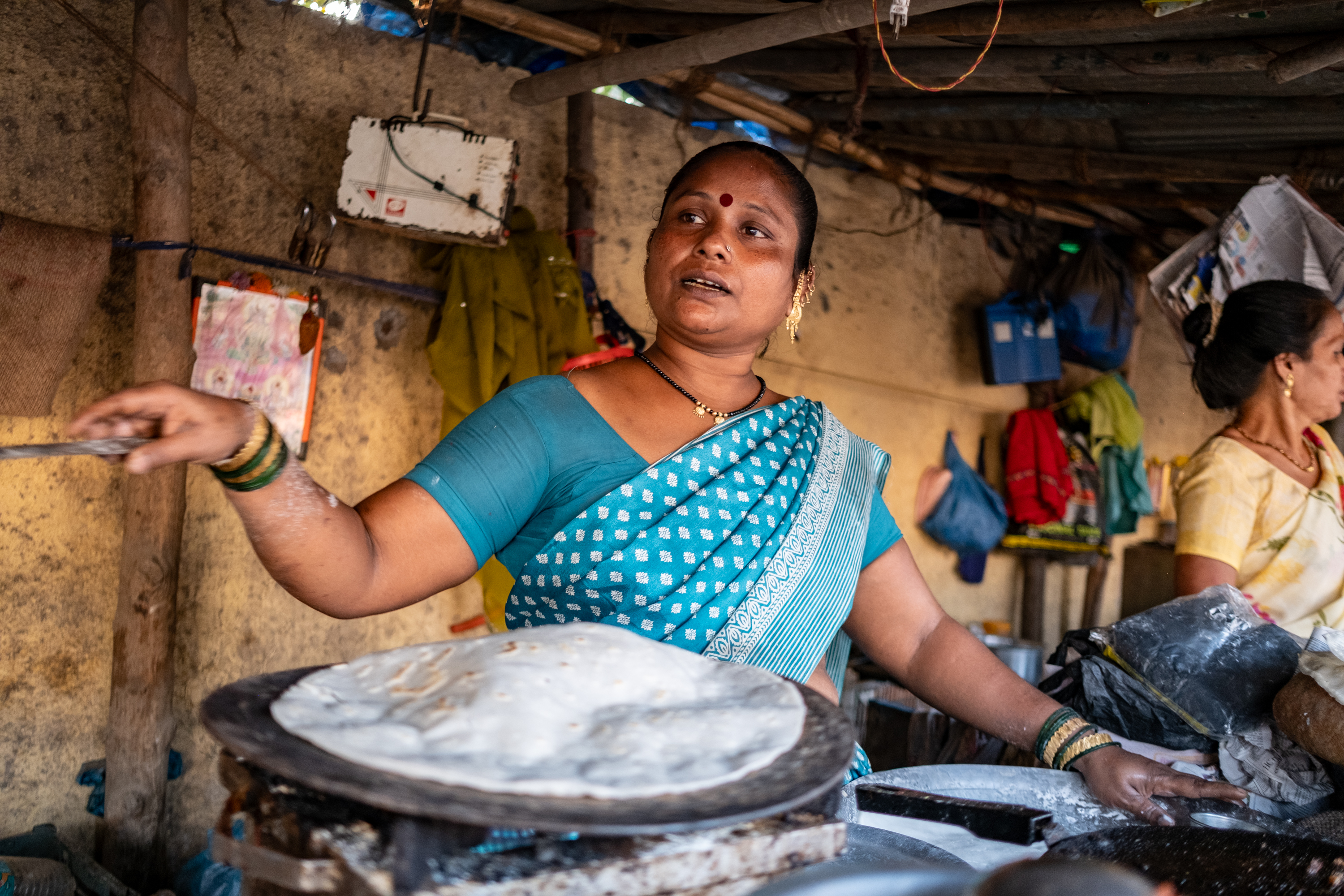
The quaint fishing villages at Madh have a significant Koli presence. Urmila Mokal and a group of Koli women run this roadside stall in Madh. They make and sell fresh rice rotis, known as tandalachi bhakri. Bhakri is a simple yet nutritious food that is popular among the Koli community, often served as a main course or accompaniment to various dishes.
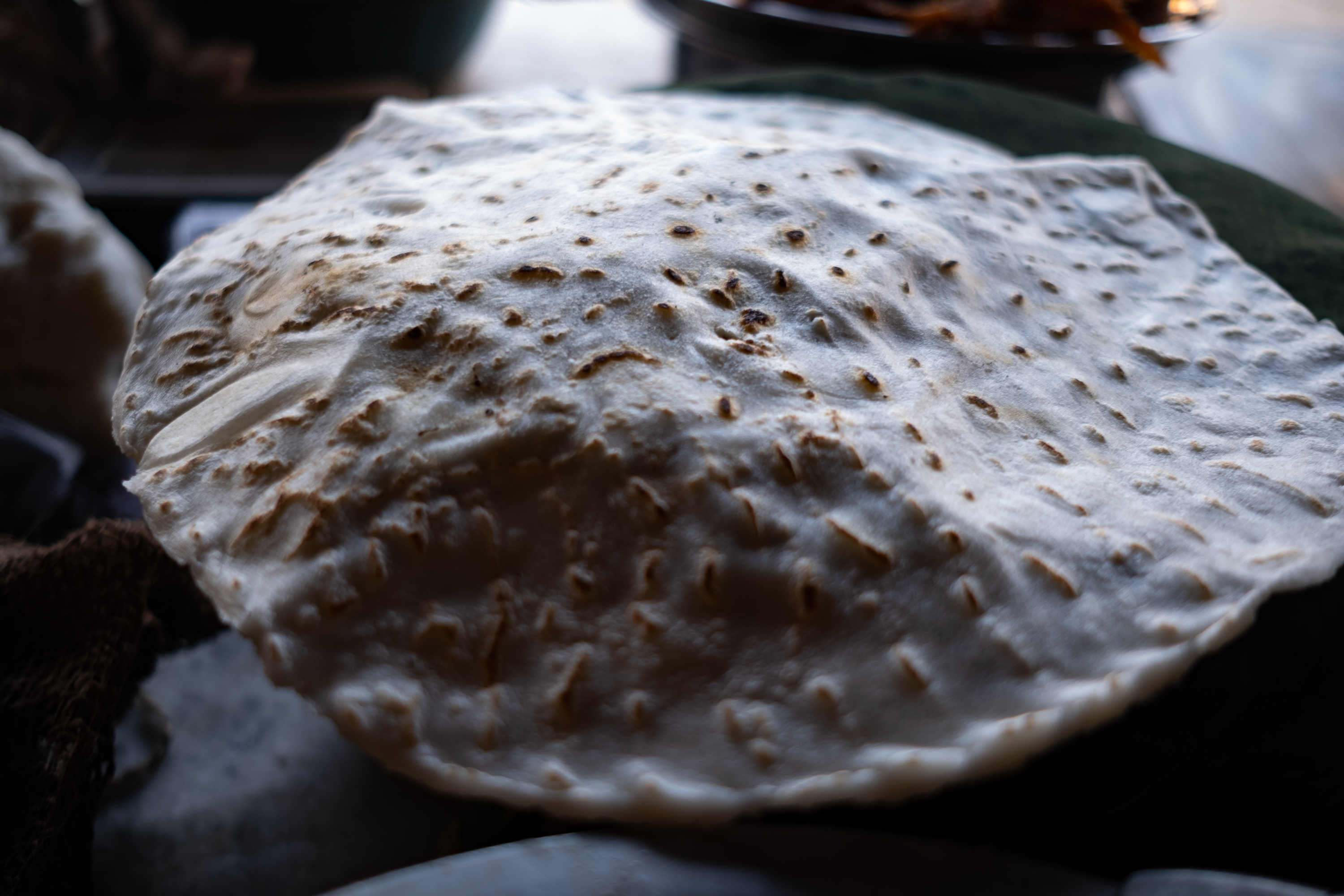
In the local Marathi dialect, tandula means rice, and bhakri means roti, resulting in the tandalachi bhakri, or rice roti. While the basic preparation method remains the same, there are variations of bhakri made with different flours. These include jowar (sorghum), bajra (pearl millet), and nachni (finger millet), which are common in different regions of India.
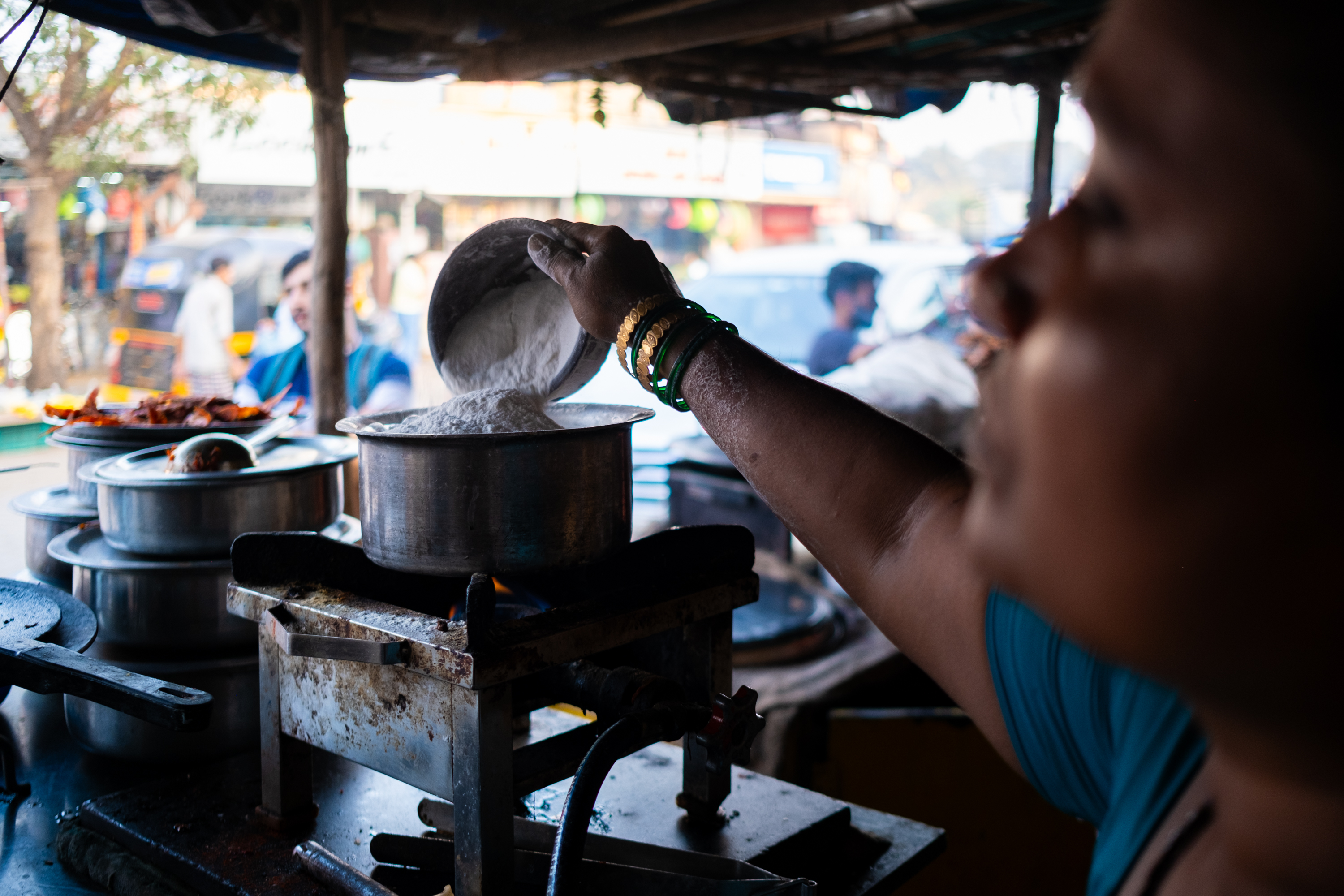
The base ingredient for making tandalachi bhakri is rice flour, which is made from a special variety of rice. The ladies prepare the flour at home and carry it in containers to the stall where they make the dough fresh.
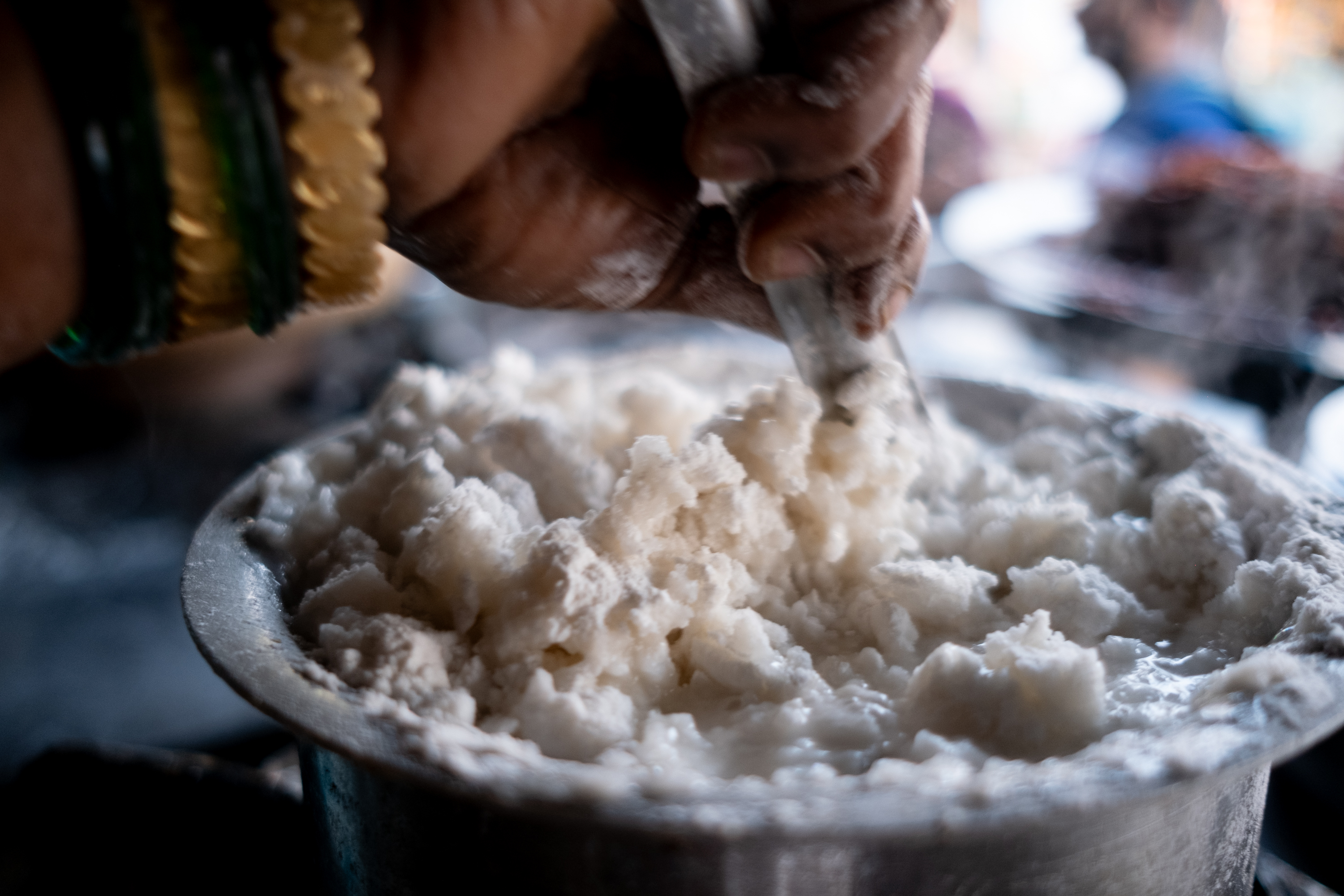
The dough is prepared by adding boiling water to the flour and mixing it thoroughly. The dough should be firm and pliable. Salt may be added to enhance the flavour, although this is optional.
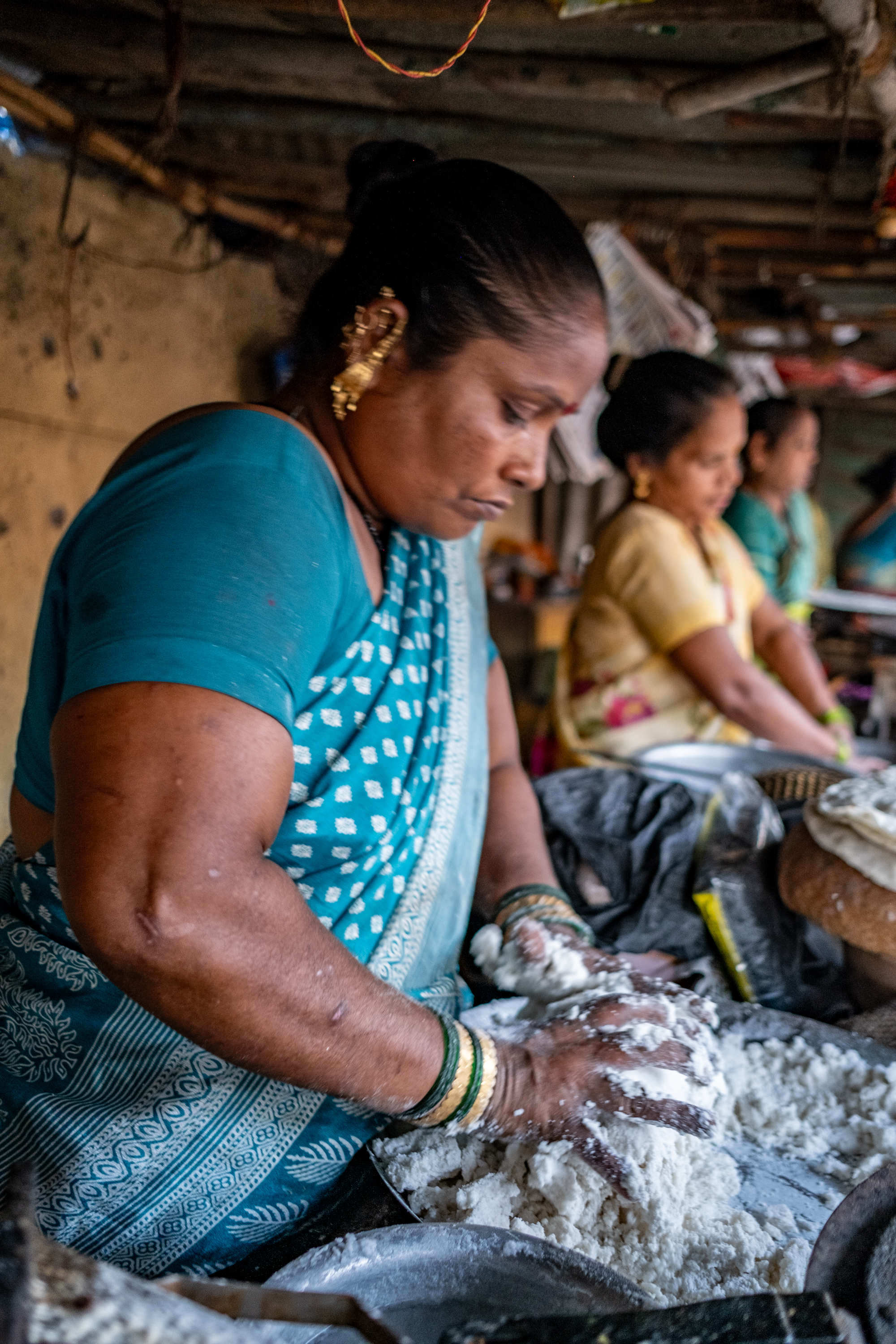
Urmila, who works at the stall, thoroughly kneads the dough to ensure an even mixture of rice flour and water. Kneading helps to develop the gluten in the rice flour, which gives the bhakri its texture and makes the dough supple and soft, allowing it to stretch.
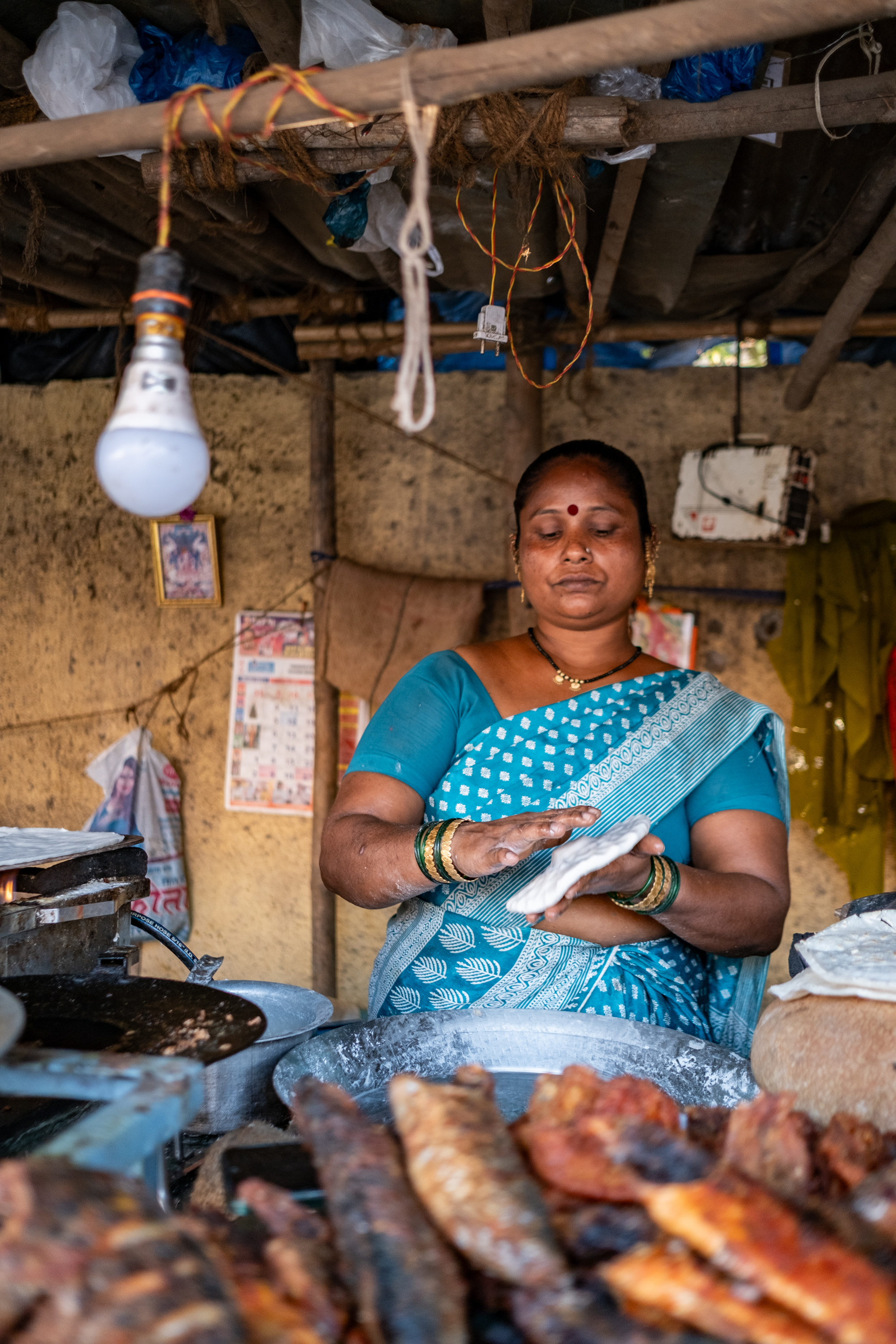
Once the dough is kneaded, it is divided into small, round portions. Each portion will be used to make an individual bhakri. Next, Urmila shapes the dough into flat discs by turning it in a circular motion. Simultaneously, Urmila removes excess dough by pressing down on it with the palms of her hands.
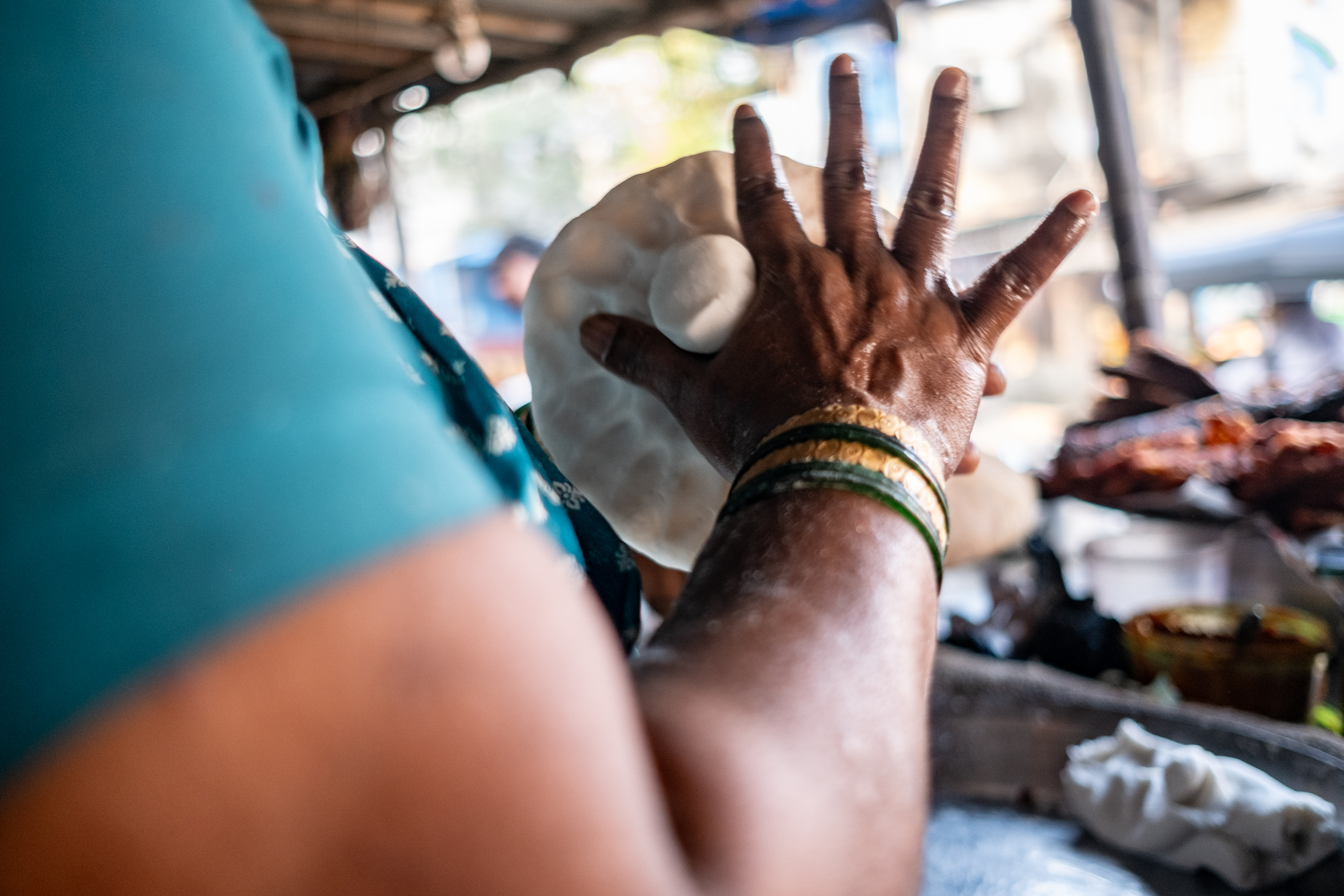
Kolis pass down the skill of making bhakris from mother to daughter and other female family members, who typically handle the cooking at home. Marriage negotiations evaluate a Koli bride's worthiness based on her ability to prepare the perfect round bhakri.
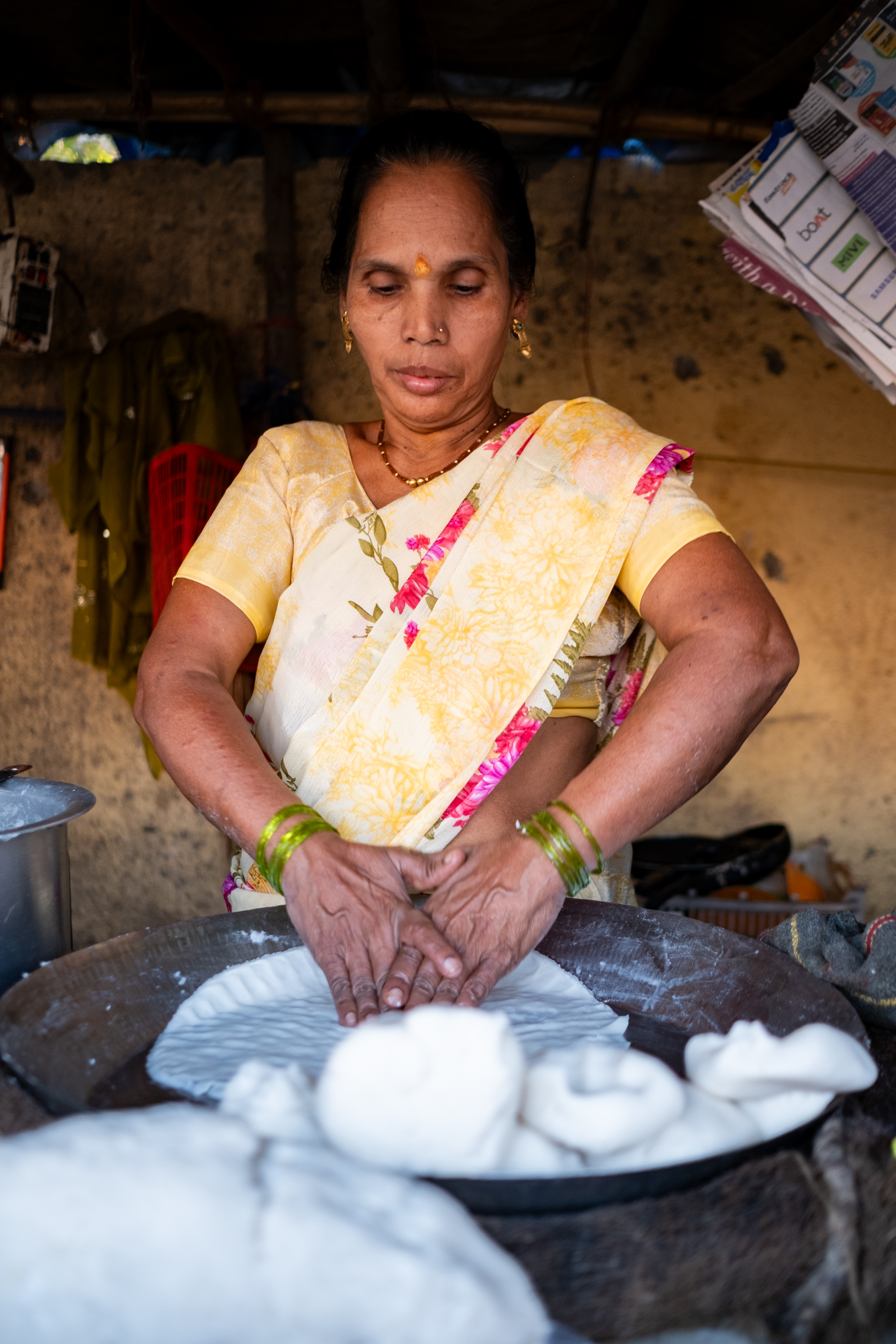
A portion of the dough is taken and flattened into a round shape by pressing it against a flat surface. The pressing is done entirely by hand, which takes considerable skill. They do not use a rolling pin, unlike their counterparts in other parts of India. The ideal bhakri should be of uniform size and thickness, which may take years of hands-on experience to perfect.
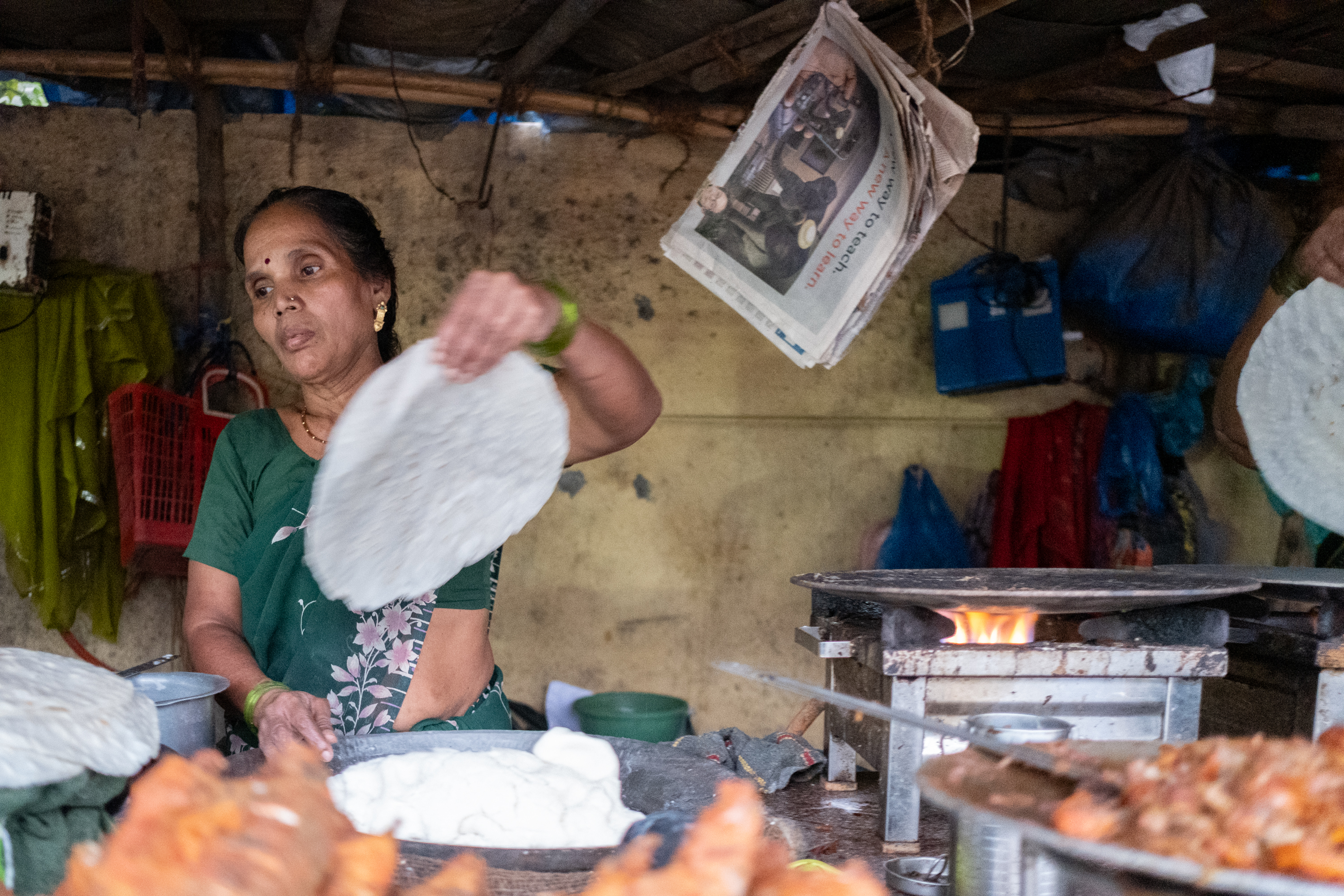
Next, they cook the flattened dough on a tava that receives heat from underneath. For this purpose, Koli women typically use a cast-iron tava. Koli women cook the bhakri on both sides until it turns golden brown, flipping it multiple times to ensure even cooking.
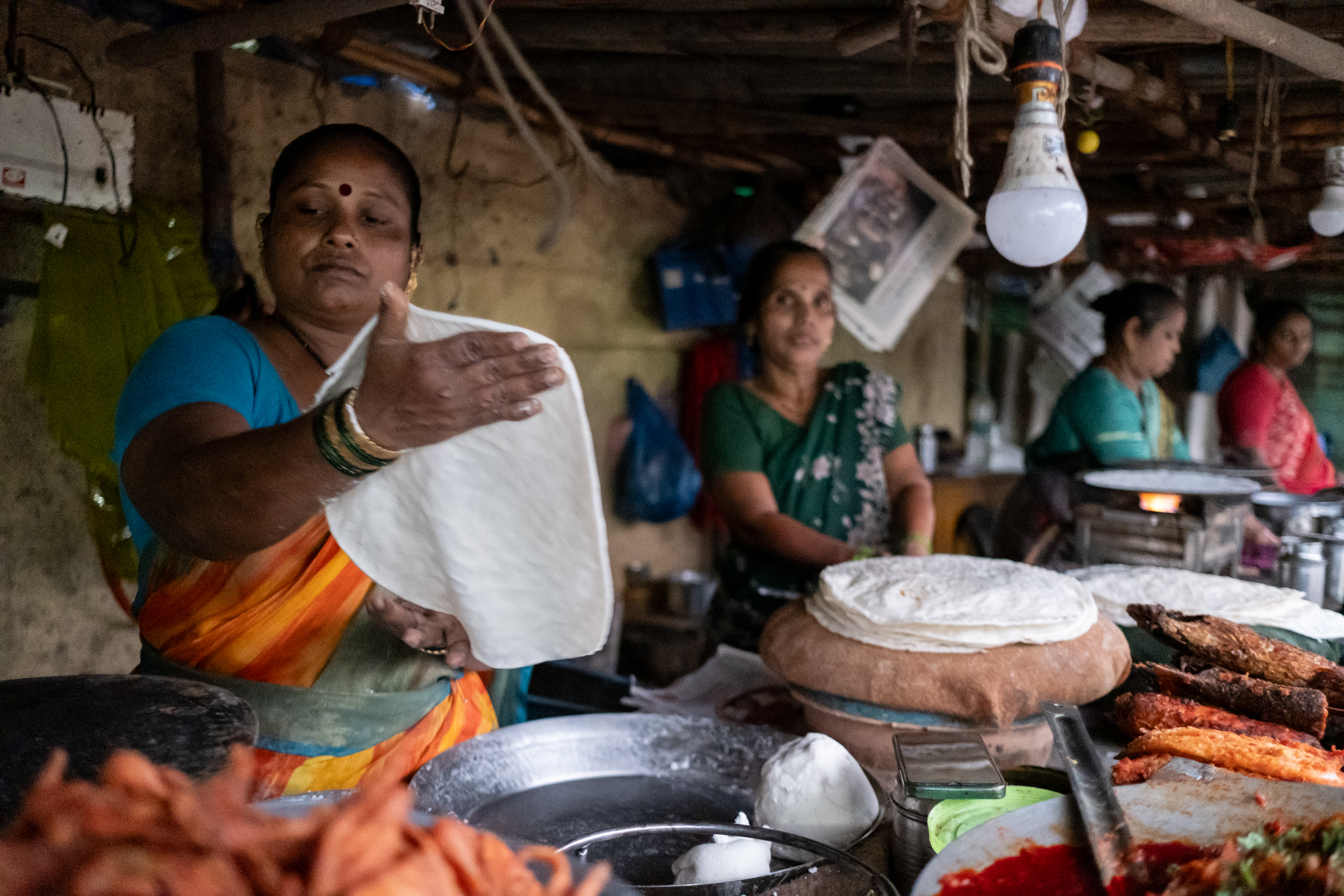
Once cooked, remove the bhakri from the tava and serve it hot. It can be enjoyed plain or accompanied by chutney, pickles, curry, or vegetables. On average, a woman at the stall makes 45 to 50 bhakris in a day. Because the stall has no seating facility, customers pack the bhakri in newspapers and carry it home.

The stall also prepares a variety of seafood dishes. They marinate the Bombil fish (also known as Bombay duck) in spices, coat it with semolina or rice flour, and deep-fry it until crispy. They cook Pomfret, another popular fish, in a spicy coconut-based curry, flavoured with tamarind, garlic, and other spices.
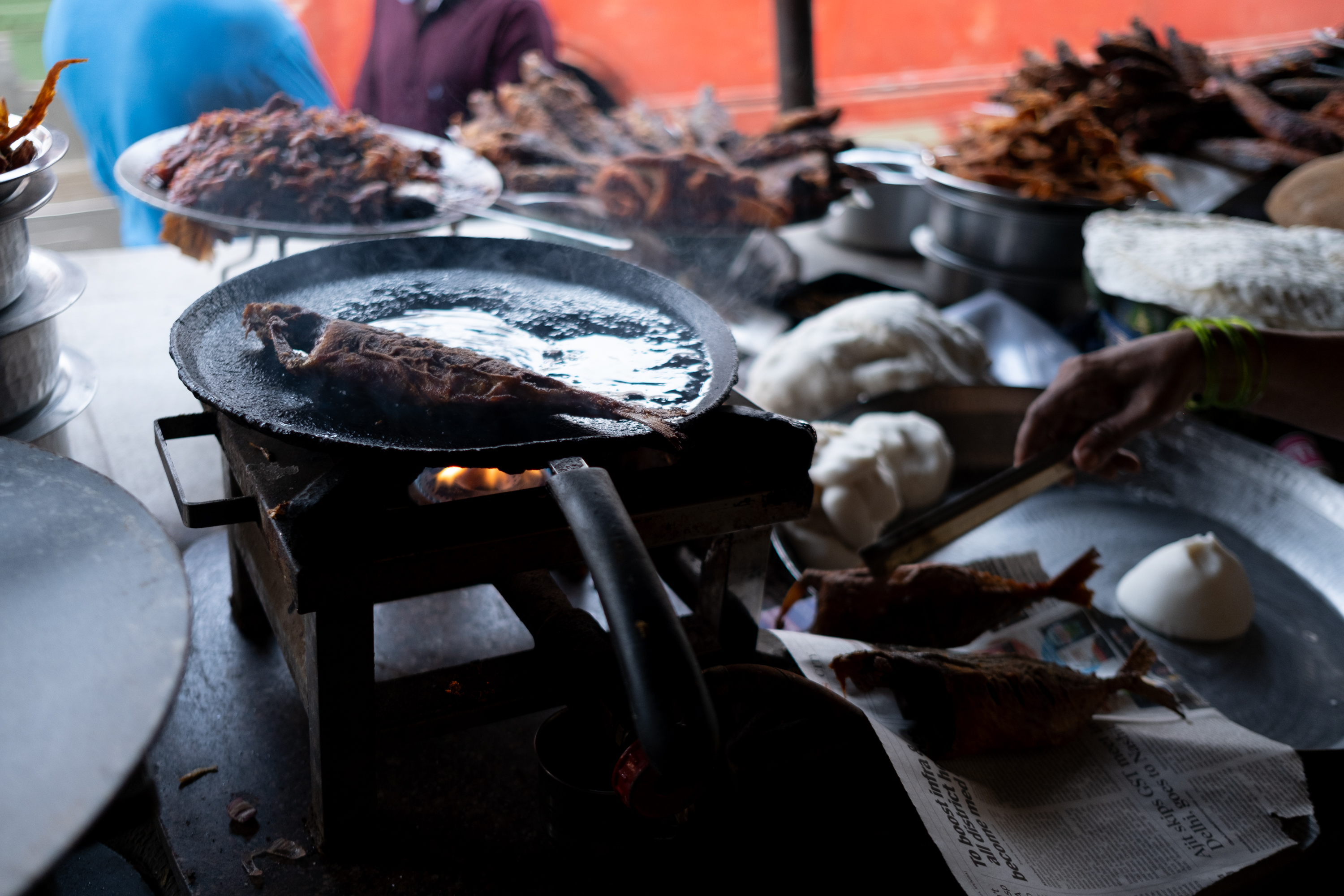
Bangda (mackerel fish), a popular fish item, is marinated in a spicy masala and then shallow-fried until crispy.
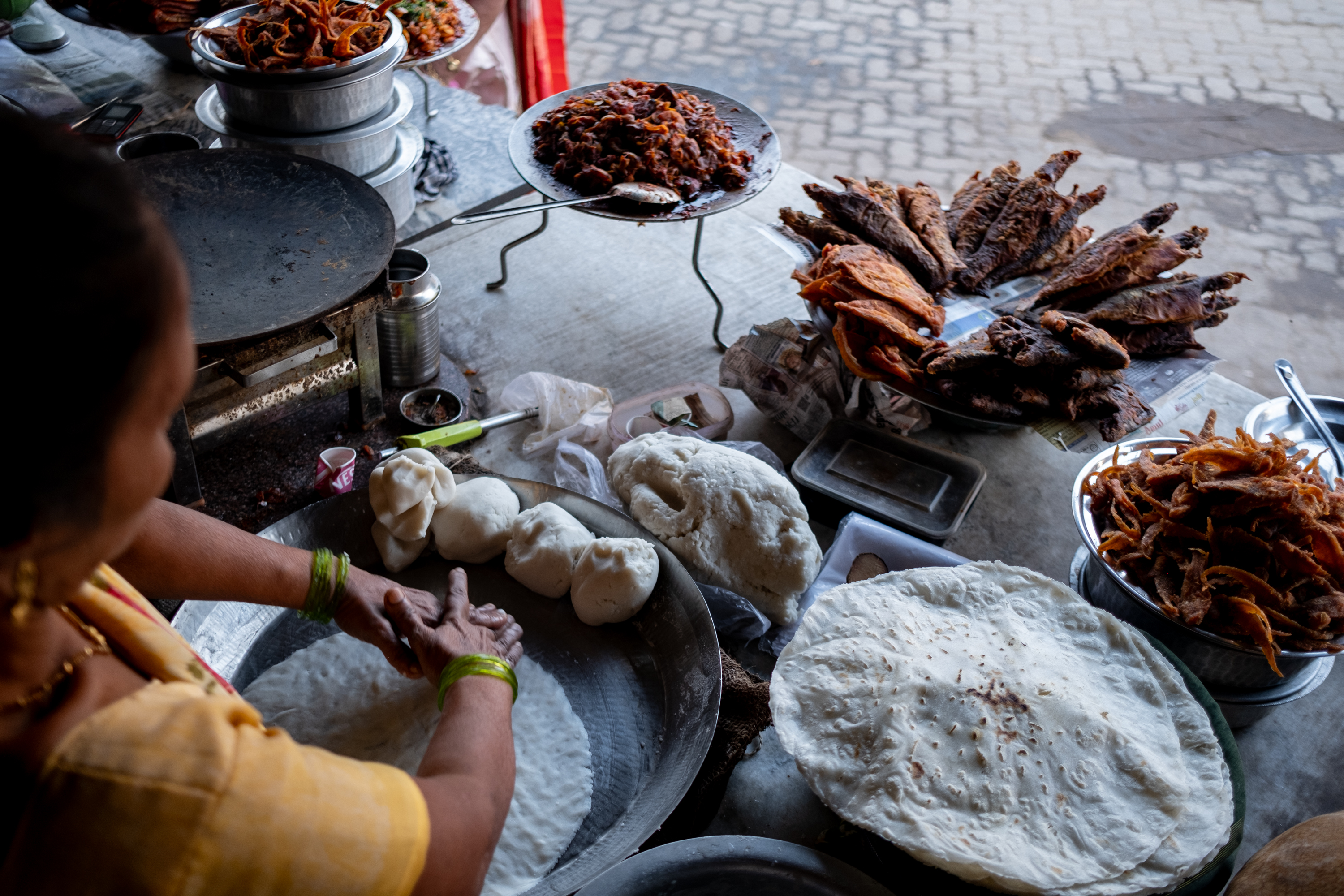
Bhakris are lightweight and simple to pack, and they last several days, making them ideal food for long-distance travel. Koli fishermen pack dozens of bhakris when they go deep sea fishing, as they may be unable to cook at sea for days.Bangda (mackerel fish), a popular fish item, is marinated in spicy masala and then shallow-fried until crispy.
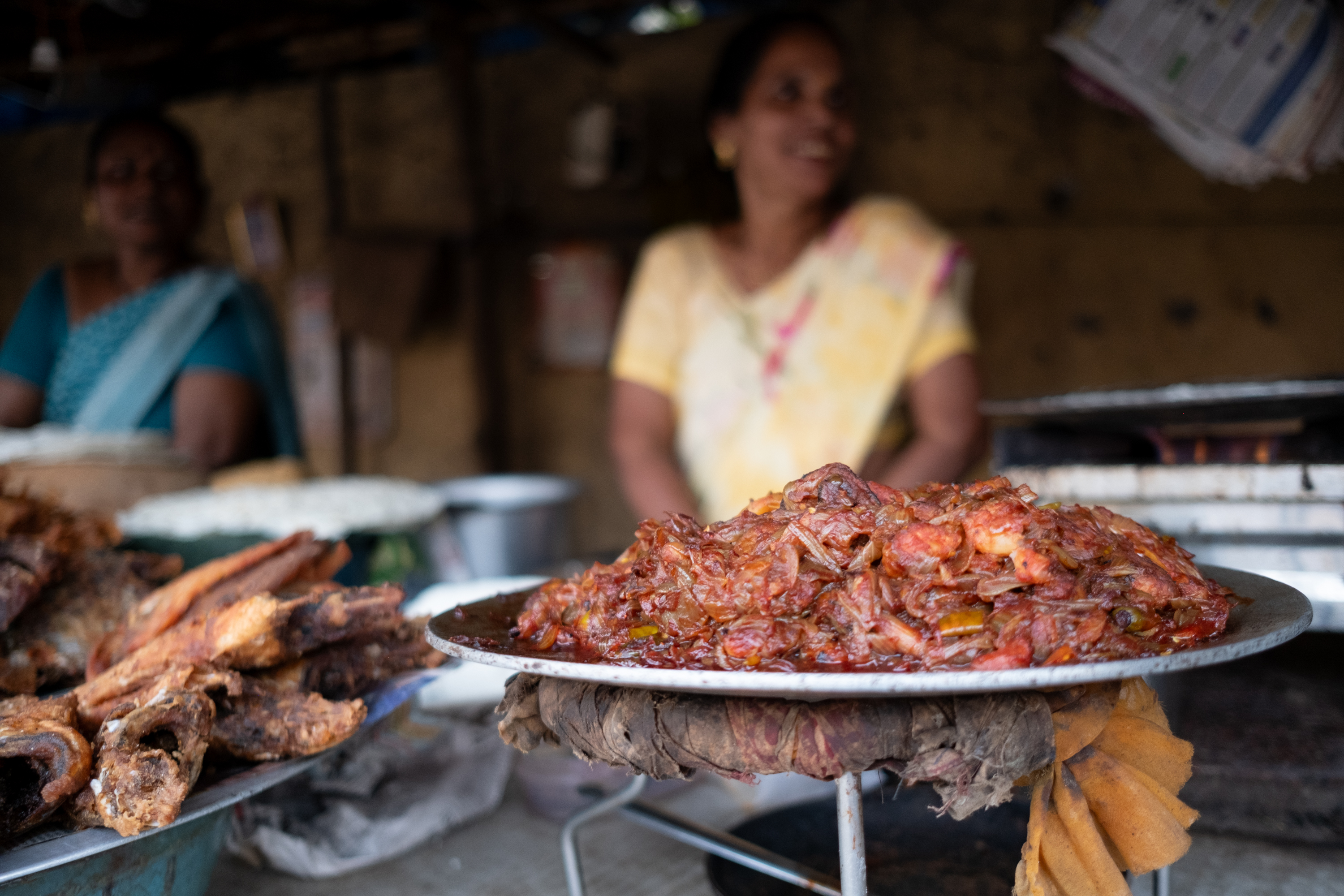
Kolambi (spicy fried prawn) is another popular Koli dish. The prawns are prepared with spices like turmeric, red chilli powder, garam masala, and fried to give them a red colour.
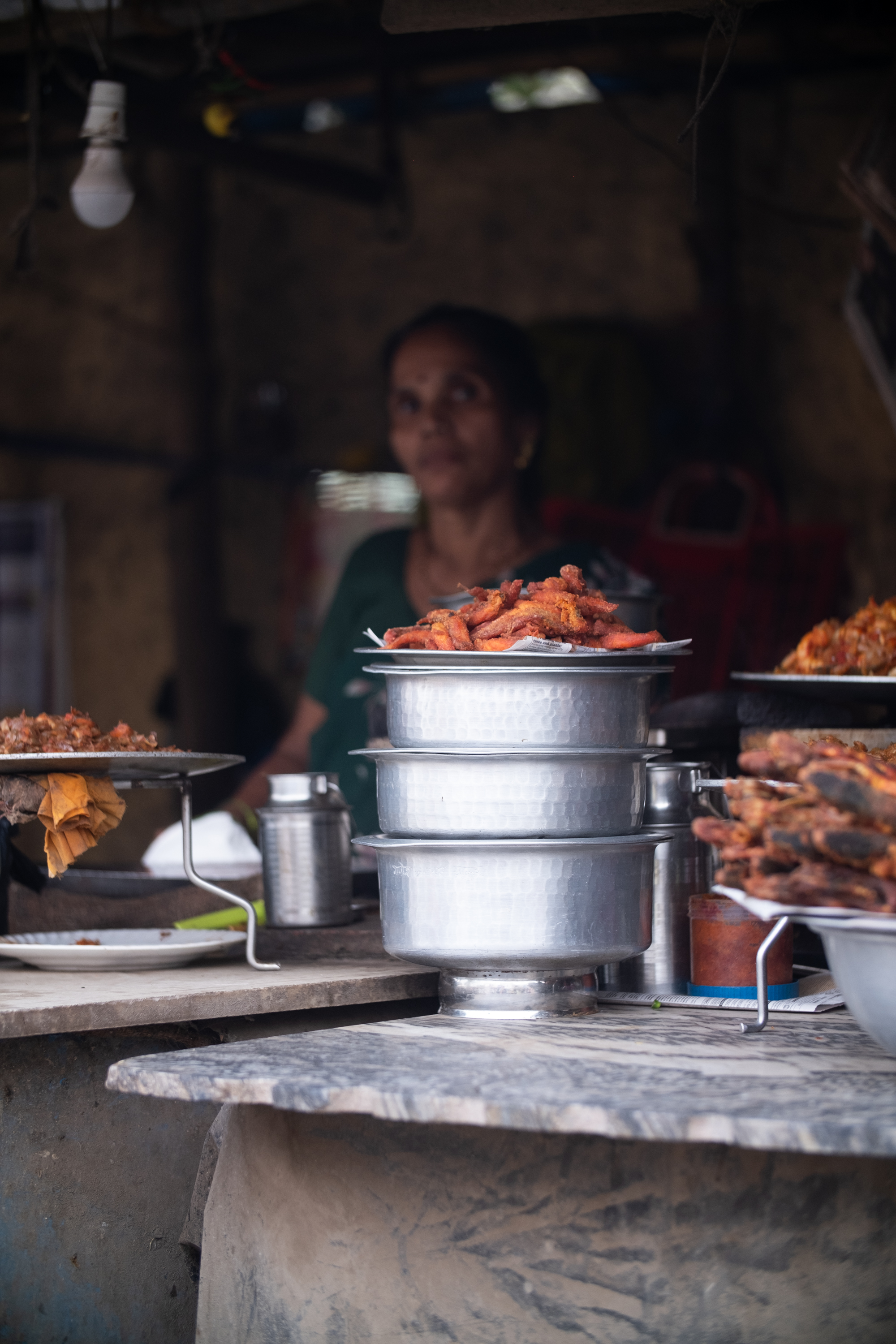
The raw fish is seasoned at home and carried to the stall in sealed aluminium containers, which keeps them fresh.

Goddess Lakshmi, in her form as Gajalakshmi (Lakshmi garlanded by a pair of elephants), hangs on the stall's wall. Lakshmi is the Hindu goddess of wealth and prosperity. The Koli women offer incense to Lakshmi in the morning, before business commences, and after sunset, the same way they do at their homes.
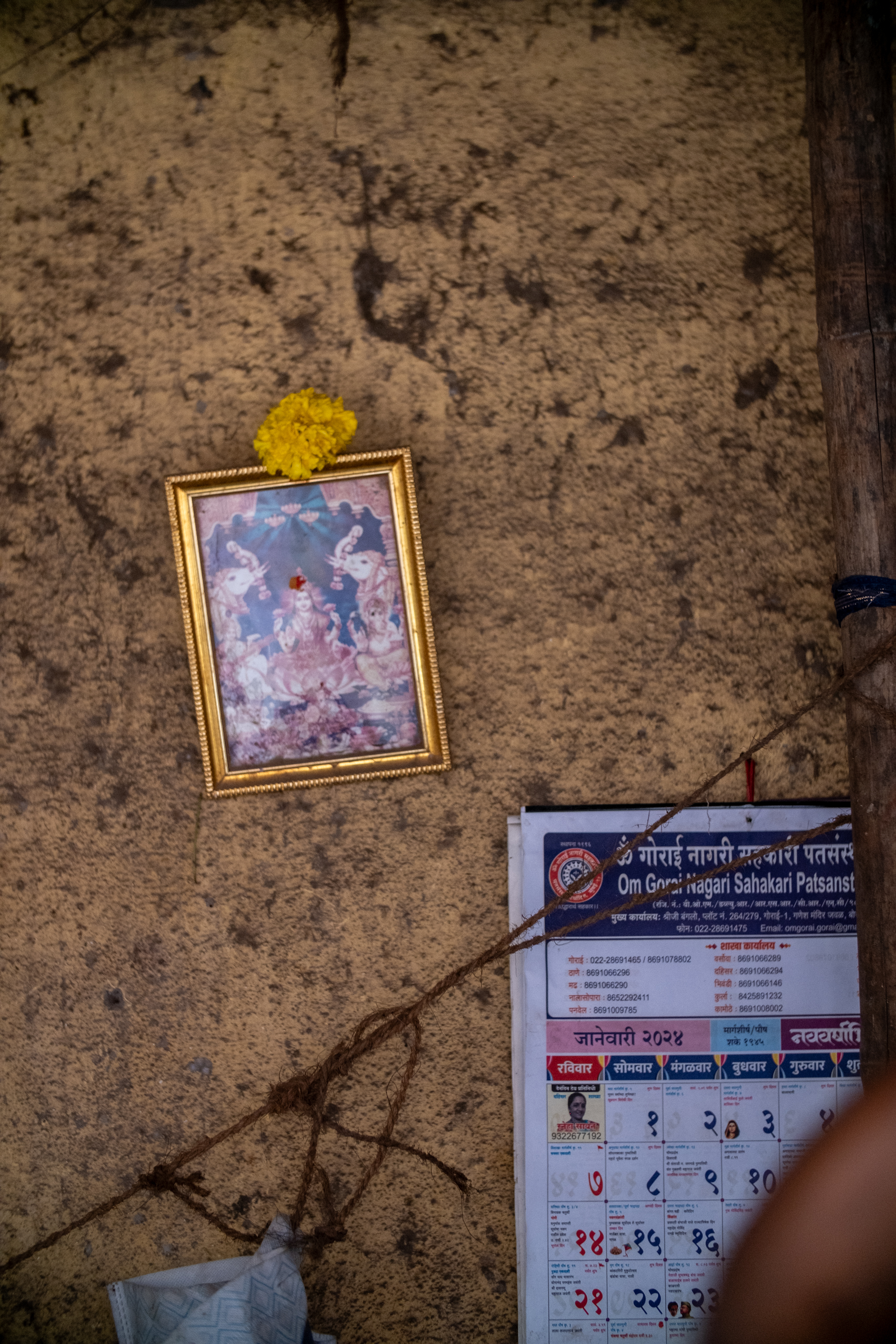
Good luck charms like lemon and chilli, along with a miniature kolapuri chappal and black doll, are hung at the stall to ward off evil spirits.
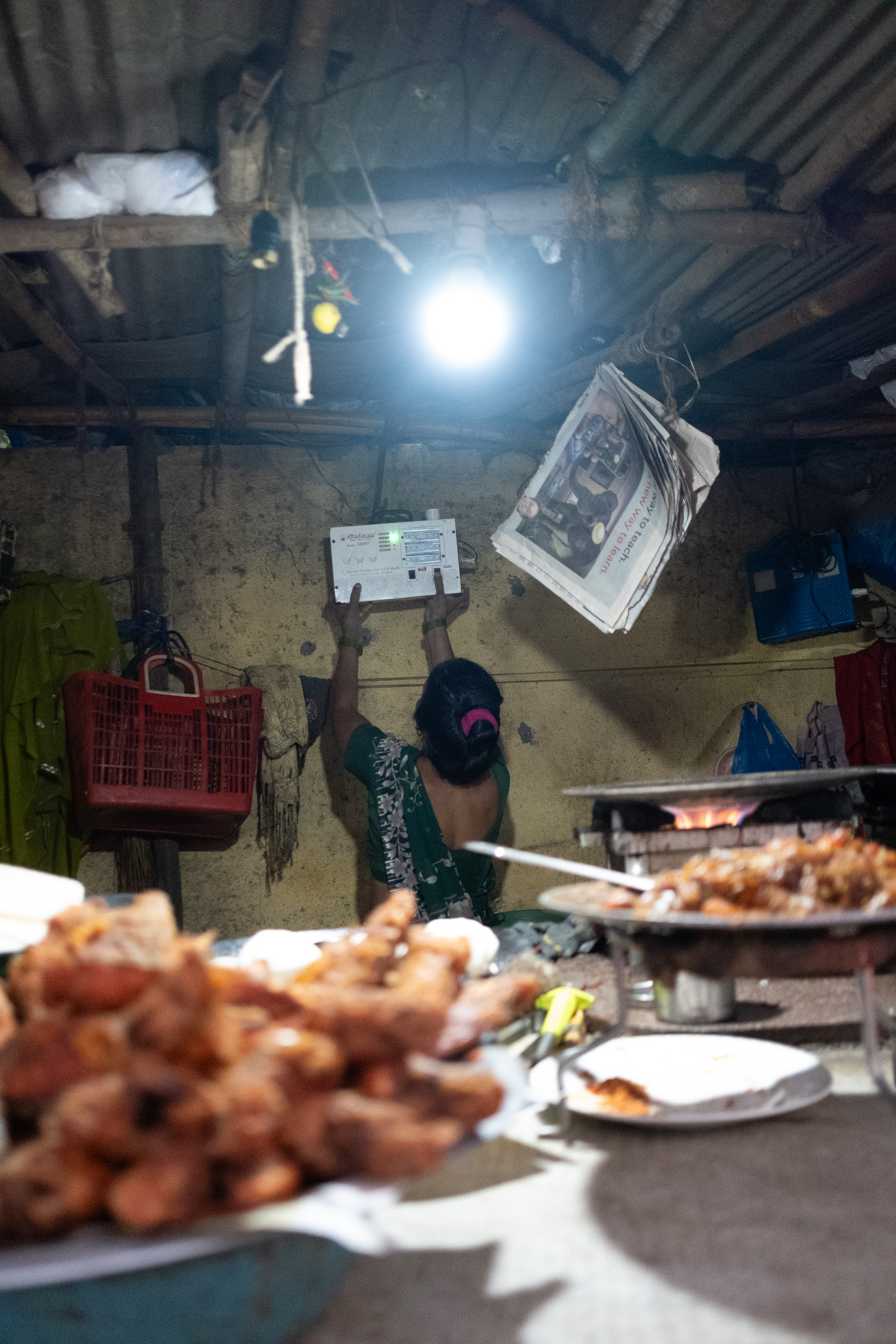
As evening sets in, Kusum activates a portable generator that runs on solar energy. Most roadside eateries do not have an electricity connection and rely on alternative methods to light their stalls post-sunset.

Kusum relishes a cup of tea at the end of the day’s work.